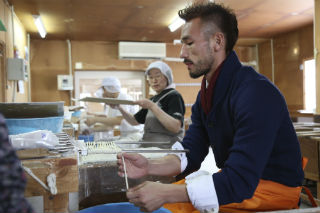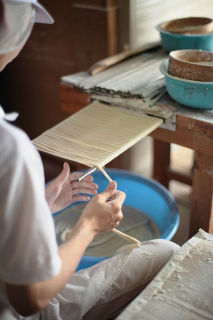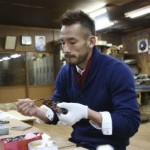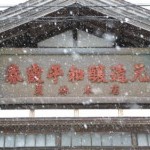 |
目次 Food Representing AkitaWhat comes to your mind when you think of Akita food? ”Kiritanpo”, ”hatahata”, ”hinai jidori”. Mountain herbs grown on vast lands of nature cannot be left out either. Also, along with this, we have the ”Inaniwa udon”. It is rather slender in width, compared to Sanuki udon. However, it has a strong chewy texture and above that, is smooth to the tongue and slithers down your throat. It is said to have originated during the Edo period, but at that time it was too much of a luxury for common folk. It became popular in the Meiji period, and has since been known to be a superb delicacy of Akita. |
Uncompromised Udon-makingSato-Youetsu-Honpo keeps the traditional method of making Inaniwa udon to this day. The craftsman makes the udon by hand, not a manufacturing line. This is easy to say, but doing this ”all by hand” calls for precision and does not allow any compromising. They are also particular about the ingredients. Domestic flour is used for all their products. The aroma that passes through your nose, the firmness of the noodles, the flavor of the flour itself – all these things cannot be appreciated unless domestic flour is used. |
 |
|
|
Cold water to tightenInaniwa udon is referred to as the best 3 udon of Japan and has been appreciated as a preserved food in the past, hence keeping its ”dry noodle” form. Sato-Youetsu-Honpo’s products are also ”dry inaniwa udon”. It is said that the taste will differ based on how it is boiled. The point is to rinse the noodles in cold water once boiling. By rinsing it in cold water, the noodles tighten and become even smoother in texture. The unique fragrance and flavor is also said to be enhanced this way. Generally, Inaniwa udon is often eaten cold to finish up a meal, however in this region, many enjoy it in hot chicken broth with sliced chicken, local vegetables and herbs on top. This is also a way to enjoy the ”authentic” taste of Inaniwa udon. |






